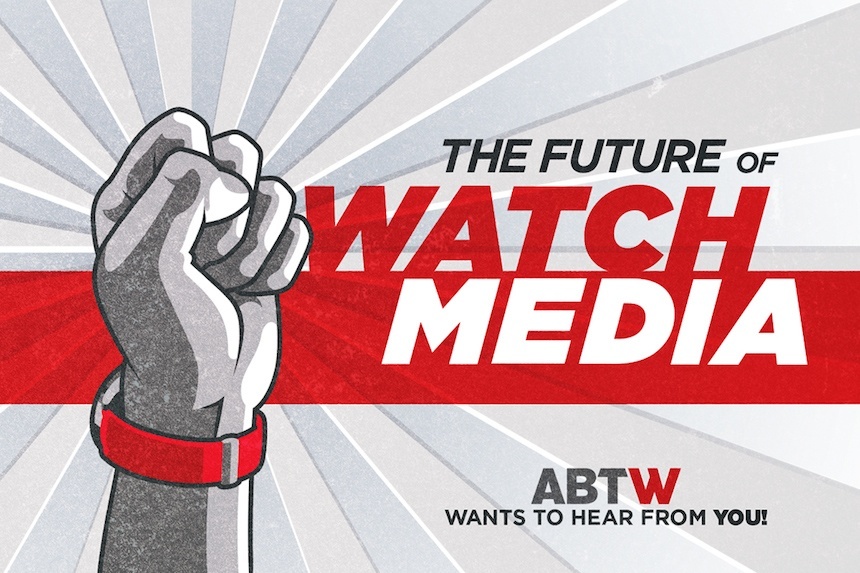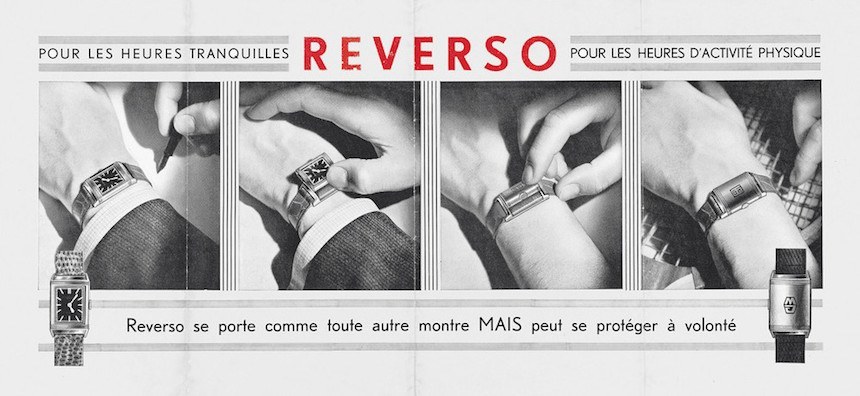
Sometimes mystery isn’t a good thing, especially when it comes to media that consumers trust and follow with regularity. So with that said, I’d like to begin a conversation with aBlogtoWatch’s audience on the topic of how you feel the site can continue to serve you as we grow. When you go into a store and purchase something you immediately know how that store makes money, as you just left with a little bit less funds in your bank account. When it comes to media, and internet websites, sometimes the transparency of how a company works and derives revenue is less straight-forward. The aBlogtoWatch team doesn’t like to make rash decisions on how we want to grow, because at the end of the day, we want to make sure that aBlogtoWatch always remains a valuable resource for consumers and its followers.
The Issue: Sustainable Growth & Transparency
What is this conversation really all about? It is about you as an audience and watch community member offering feedback on how we might grow and evolve. aBlogtoWatch evolved from a hobby site that I started in 2007 and has developed into a business with a range of full-time and part-time people around the world, who work to maintain the site, share content, and of course, produce news and reviews on watches and the lifestyle around loving and collecting timepieces.
As far as I know, I was the first person to become a “full time watch blogger,” and it was a sort of business model that I made up as things went along, because there was simply no other example to learn from or follow in this space. Today, in 2014, internet media sites of all varieties struggle because there still isn’t a clear path to building a business out of internet media alone, no matter what the subject matter of that website is. That isn’t to say that there aren’t fantastic success stories, but they are not the norm.
I mention all this because successful media sites aren’t always clear about how they derive their revenue, and sometimes that conflicts with an outlet’s desire to remain transparent and credible to their audience. In my experience it is often the case that if a website isn’t strictly selling something, it can be difficult or confusing to glean its business model.

Not that all businesses must be transparent, but it is my personal opinion that a business – whose bread and butter is the attention of highly educated and sophisticated consumers – should have an honest relationship with its audience. Like I said above, the goal of aBlogtoWatch from the beginning was to be a valuable resource for its audience, and as we grow I’ve been keen to keep it that way.
As times goes on, more and more interesting opportunities open up for aBlogtoWatch that involve potential for increased revenue generation. I don’t think there is any shame in trying to increase our income because that allows us to bring in better people and simply offer more and better content. Clearly, I and many people on the aBlogtoWatch team do this because we not only love watches, but also admire the people who follow our coverage and keep coming back for more. So rather than guess and wonder what our audience feels comfortable with, I am of the opinion that we should simply explain various areas of potential and gauge how the community feels about it – because no matter what we do, it has the potential to enhance or merely alter the user experience.
I don’t think changing the user experience on aBlogtoWatch is necessarily a bad thing but, as I said above, I don’t want to stray from our original goals, and remove any of the reasons why people consume and trust the content we produce. In many ways I feel that aBlogtoWatch belongs to the community as much as I feel it belongs to the people who produce the content.

The Two Sources Of Revenue: Users & Advertisers
There are essentially two ways for a website to make money, that is either by extracting value from its users, or by selling forms of advertising to its users. When what you produce is media such as articles, videos, and images, it is rarely the case that you can sell it to users when it comes to offering it on the internet. The reasons for this are honestly a larger topic which could fill a few books, but lets just say it is difficult to do.
Traditional magazines (for example) benefited from user subscription income in addition to advertising income. People would pay for magazines because it was a physical item and in order to receive a copy they often needed to buy it. Internet distribution is so immediate and lacks any physical form that people are less inclined to pay for digital media. Further, the ability for search engines such as Google to easily make our content available precludes a site like aBlogtoWatch from selling its content because it would need to be hidden from users.
That isn’t to say that asking for people to pay for content or some content (while some is still free) is a bad thing. Major brand news sites continue to experiment with subscription models and charging for content. However, only a few of these experiments are successful and many of them involve a closed transactional system where they must collect financial information from each user. I believe that in the future, new ways of paying for content via micro transactions will become more readily available, but given the policies and business models of most credit card providers and banks, we simply aren’t there yet (though some people are working really hard on it).

aBlogtoWatch could feasibly ask its audience to pay a subscription fee for all or some of its content. This should probably coincide with a larger trend of consumers being more willing to purchase content online, but it is an option that, if successful, would be very good for consumers. Why is the “user generated revenue” model good for our audience? Well, when the audience is our customer we are even more inclined to “work for our customer.” That means more content and coverage which is specifically on the side of consumers. The best example would be the content by a company like Consumer Reports. They offer rather detailed and study-based reviews on products and services that most consumers need. They refuse normal advertising income because it would negatively effect their ability to neutrally review products. Consumer Reports is a good example of a purist approach to being totally funded by its readers, and why that is a good idea.
The opposite of a user generated revenue model is a purely advertising revenue driven model – and this is what most media websites rely on. They don’t do this to be sneaky or unethical, but it is often the only way to make money. There are a few problems with this approach. First is that the internet has made advertising space a very common commodity. Traditional advertising space via television, radio, billboards, and print was much more limited. Today the amount of sellable “impressions” is also limitless. This means that websites need to explain in detail to advertisers why advertising to their audience is different and more effective than advertising elsewhere. Advertisers have a serious need to share their messages with consumers, but the trick for them is being able to effectively determine how to spread their budgets and make sense of a lot of complex factors.

What I’ve described above is considered to be more “traditional” advertising. That means some type of display which a user can see and immediately know whether or not it is advertising or editorial content. The other major issues with internet advertising include the trend to blend advertising and editorial, or rather to make it extremely unclear what is or isn’t part of a website’s experience or some type of revenue generation scheme. There are (and have been) some extremely clever ways of selling forms of advertising on a website, but the problem is that their effectiveness relies upon consumers not knowing what is happening.
As a consumer I don’t like to be deceived and I don’t want to be involved in something that I feel is deceptive to consumers or our audience. For that reason a focus on increased advertising revenue on aBlogtoWatch will always be conspicuous. There is no better way to remove user trust than to unnaturally blur the lines between natural editorial content and advertising.

With that said, I am curious to know how aBlogtoWatch audience members feel about various different forms of advertising. Display advertising in the form of banners are easy to understand and are clearly not editorial content. I actually personally feel that clearly separating advertising from editorial is better for advertisers because users observe the advertising with a more open, and less suspicious mindset. I also find that users tend to have respect for advertisers that support media which they regularly enjoy.
There are other forms of advertising which are becoming more and more popular in digital media that increasingly have become opportunities for aBlogtoWatch. This include things such as sponsored editorial content and editorialized sponsored experiences. These are jargon-speak ways of saying that an advertiser pays a media outlet to produce content about them (the advertiser) in a voice and direction similar to that of their natural editorial content. Sponsored editorial content and experiences should of course be labeled as such without anyone confusing them for natural editorial content. This practice is becoming an increasingly important part of digital media business when attempting to derive needed revenue from advertisers, but I really think users themselves should have a say in the types of sponsored editorialized content they view.
Selling Other Goods & Services To The Audience
In addition to the concept of asking users to pay for content as described, there is the option of selling items or offering services to a media outlet’s audience. This is also a popular form of revenue generation and often involves having a store as part of an otherwise media-based website. There are pluses and minuses to this, but of course the catch is trying to effectively identify not only what a user wants to buy from a media site, but what will not negatively influence a media site’s relationship with their audience.
So should aBlogtoWatch offer things for sale or provide some type of paid service to its audience? I am not saying “yes or “no,” but I think it is a common question many people have, and I am not entirely sure what approach would have the most positive outcome for all parties involved. It is entirely possible that there is something our audience really wants to buy through us that would enhance the core experience. It is equally possible that attempting to sell things to our audience would alter our “consumer to consumer” relationship with them in a negative way. I don’t have all the answers, but I think it is important to share with the community what we are thinking about.

The Right Blend
It probably goes without saying that none of the things mentioned above are mutually exclusive. aBlogtoWatch is not without revenue, but growth is always a factor, and right now more than ever I think growing in a way that respects and promotes our relationship with our audience is the most important consideration we have on our plate. As new opportunities come our way, I am often hesitant to act because I simply don’t know how our audience would feel about it. So the purpose of this article is not to bore people with an inside baseball discussion on internet media revenue practices, but rather to say that aBlogtoWatch knows it has some very opinionated and intelligent minds who visit the site on a regular basis, and we not only want to have an idea of what you do want, but also what you don’t want.
It is my job to focus on how to blend different types of revenue generation areas together in a way that makes the aBlogtoWatch user feel comfortable, cognizant, and even perhaps excited about what we are doing. Transparency is sort of an important part of my philosophy toward business. I’ve always said (and perhaps idealistically so) that I only want to run my business in a way that if my grandmother (let’s just assume I had living grandparents) audited my books, she would feel comfortable with what I am doing. Let’s face it, grandmothers tend to be pretty reasonable people.
So if you have the time now or in the future, please comment below on the above topics. Our goal is to understand from the aBlogtoWatch audience what ways of revenue generation they feel comfortable with, perhaps desire, or ultimately don’t at all want. We can’t promise to make everyone happy, but no good opinions are worth keeping silent.
